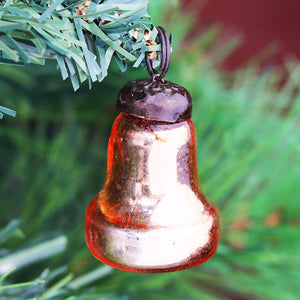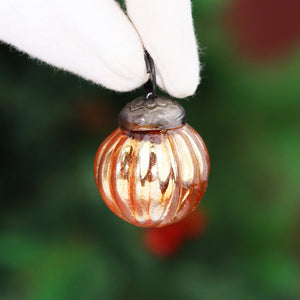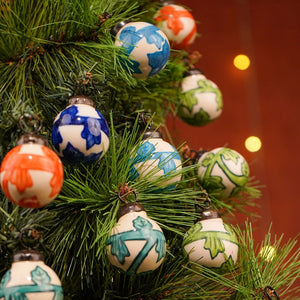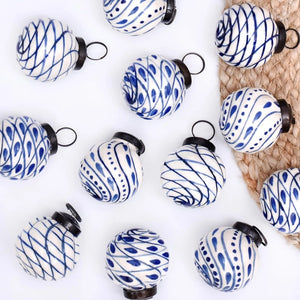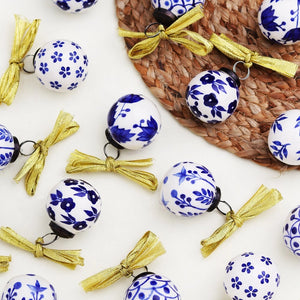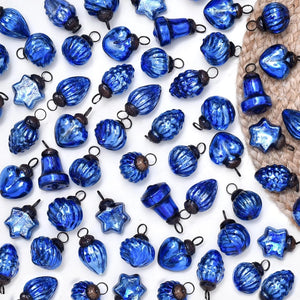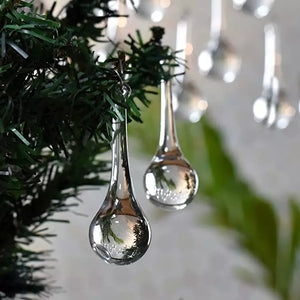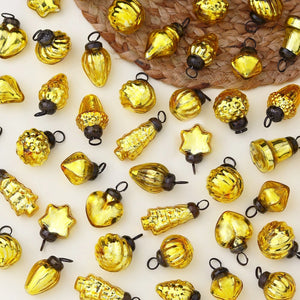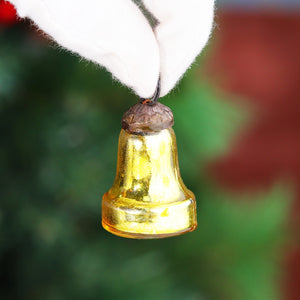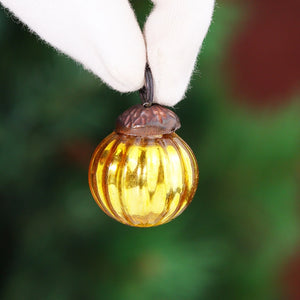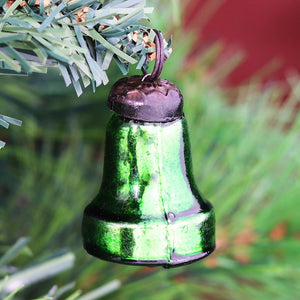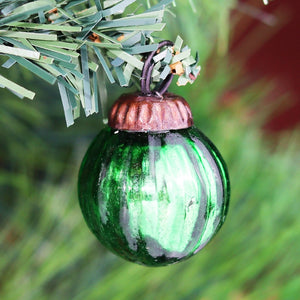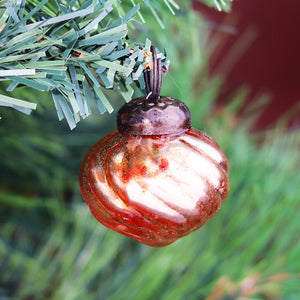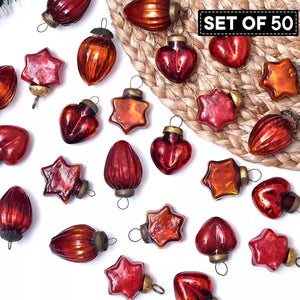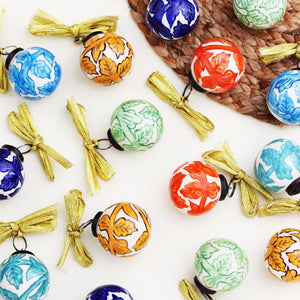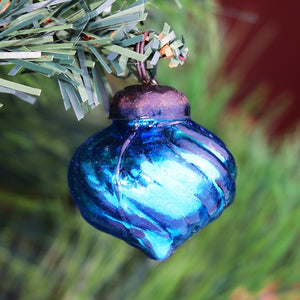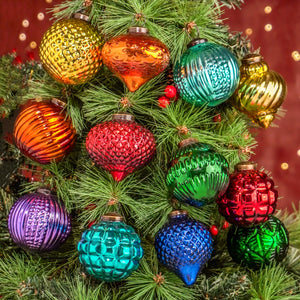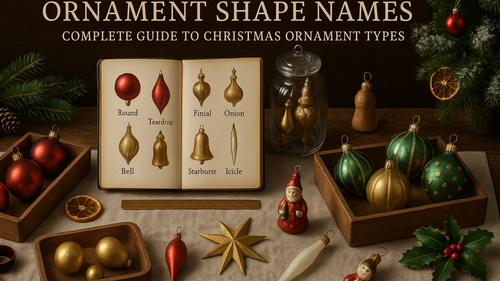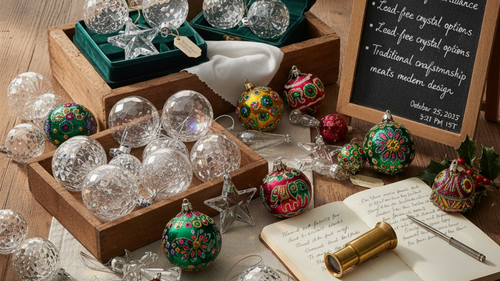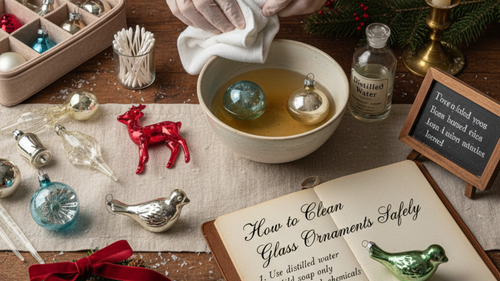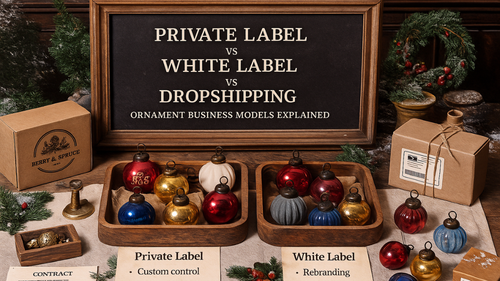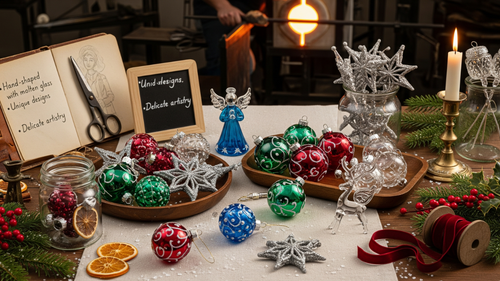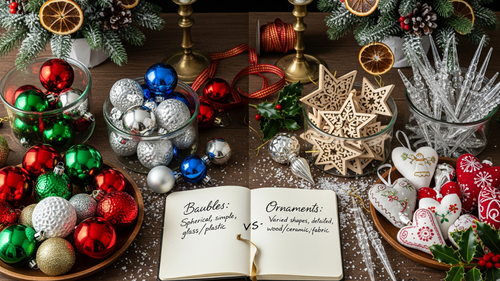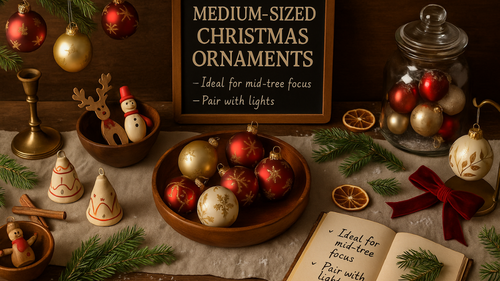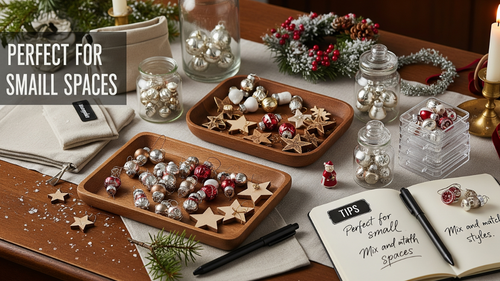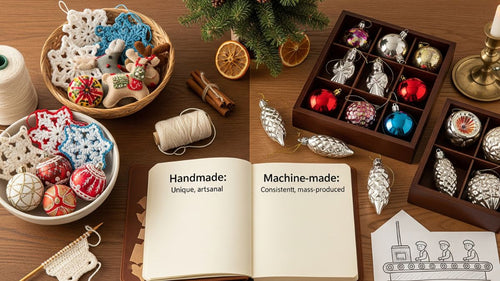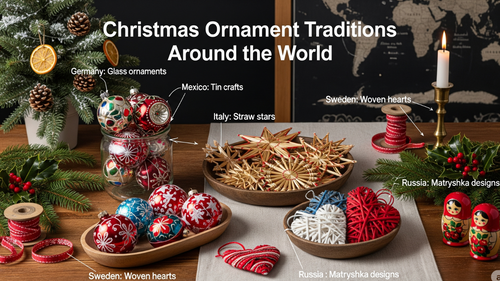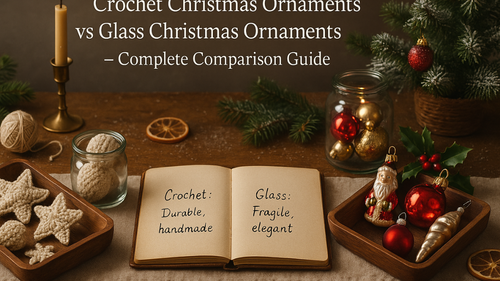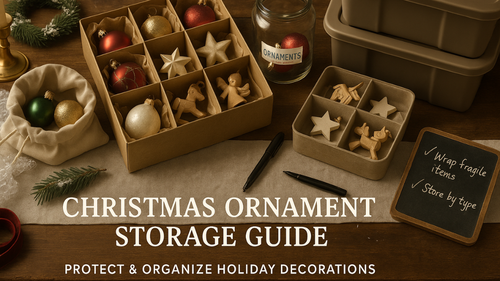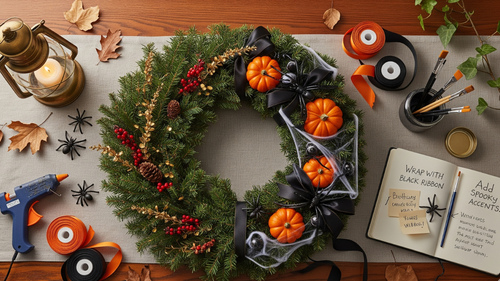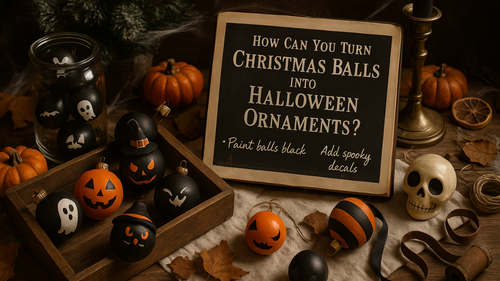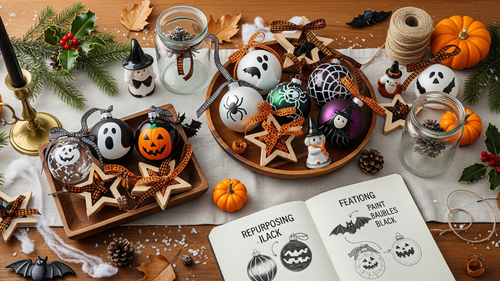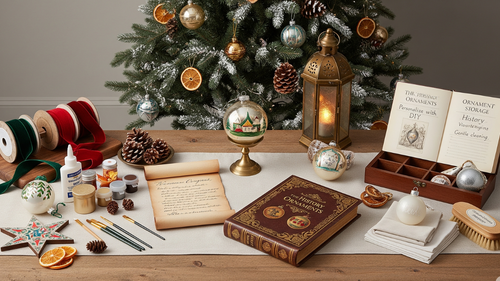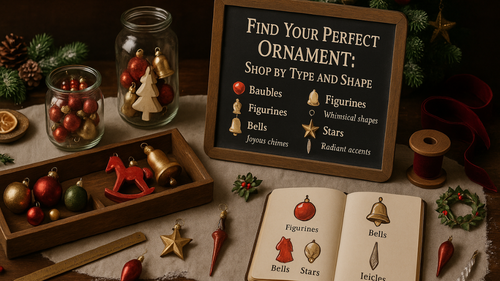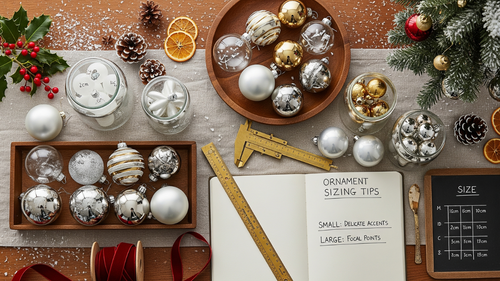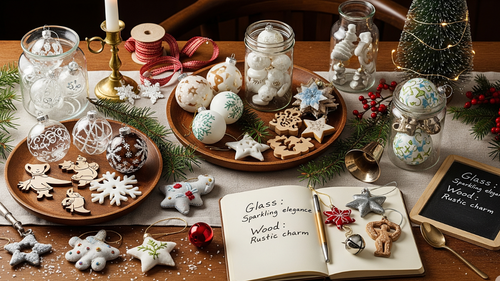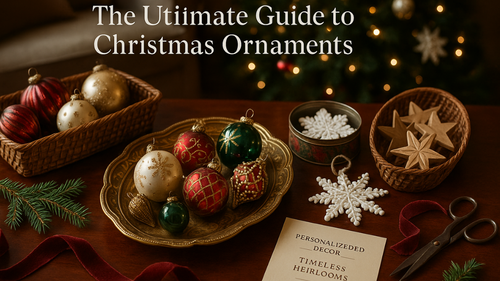Lauscha, a small town in Thuringia, Germany, is the birthplace of glass Christmas ornaments. In 1847, Hans Greiner created the first hollow glass baubles here, sparking a tradition that spread worldwide. Lauscha ornaments are renowned for their mouth-blown craftsmanship, silvering techniques, and hand-painted artistry, making them highly collectible today.
The Magical Heritage of Lauscha
Nestled in the Thuringian Highland of Germany, the picturesque town of Lauscha holds a special place in Christmas history. Situated 13 km north of Sonneberg, and 24 km southwest of Saalfeld, this valley town has been the epicenter of glass Christmas ornament production for over 175 years. Every sparkling bauble hanging on Christmas trees worldwide traces its origins back to this remarkable German village.
When exploring glass ornaments, understanding Lauscha's contribution becomes essential. The town's rich glassmaking tradition, combined with its innovative spirit, revolutionized how the world celebrates Christmas. From humble beginnings as a utilitarian glassworks to becoming the global capital of Christmas ornament production, Lauscha's story intertwines craftsmanship, commerce, and Christmas magic.
Featured Products
The legacy of Lauscha extends far beyond mere decoration. These delicate glass creations represent centuries of family traditions, artistic innovation, and cultural exchange. Today, collectors and enthusiasts worldwide seek authentic Lauscha ornaments, recognizing their superior quality and historical significance in the evolution of Christmas traditions.
Table of Contents
- Origins of Lauscha Glassblowing
- The Invention of Glass Ornaments (1847 Hans Greiner)
- How Lauscha Ornaments Conquered the World
- Distinctive Craftsmanship of Lauscha Ornaments
- Materials & Techniques Evolution
- Challenges & Resilience in the 20th Century
- Lauscha Today – Tradition Meets Modernity
- Why Lauscha Ornaments Are Collectibles
- Lauscha vs Other Ornament Traditions
- Lauscha's Influence on Modern Glass Ornaments
- Where to Buy Authentic Lauscha Ornaments
- Frequently Asked Questions
- Conclusion – Preserving the Lauscha Tradition
Key Takeaways
- Lauscha invented glass Christmas ornaments in 1847, revolutionizing holiday decorating worldwide
- Hans Greiner's innovative mouth-blown technique using wooden molds created the first hollow glass baubles
- Lauscha ornaments feature distinctive silvering, hand-painting, and superior craftsmanship that sets them apart
- The town survived two world wars and Communist rule, maintaining its glassmaking traditions
- Modern Lauscha continues producing authentic ornaments while embracing contemporary designs and tourism
- Vintage Lauscha ornaments from the 1950s-1960s can command prices exceeding $200 among collectors
- Understanding handblown Christmas ornaments helps appreciate Lauscha's artisanal legacy
Origins of Lauscha Glassblowing
The story of Lauscha glass begins in 1597, when Christoph Müller and Hans Greiner established the first glassworks in Lauscha. This foundational moment marked the beginning of what would become a four-century glassmaking legacy. The town's location in the Thuringian forest provided essential natural resources: abundant sand deposits, endless supplies of wood for furnace fuel, and clear mountain water.
Initially, Lauscha glassmakers focused on practical items – drinkware, tableware, and glass beads for trade. Early Lauscha glass has a greenish tint resulting from the high iron content in the forest sand and an infusion of bubbles. This characteristic gave early Lauscha glass its distinctive appearance, though it would later be refined for decorative purposes.
Featured Products
The transition from utilitarian glassware to decorative artistry happened gradually over two centuries. Lauscha's isolated mountain location forced residents to become self-sufficient and innovative. Glass beads became a specialty, traded throughout Europe and eventually reaching American markets. This early export experience would prove invaluable when Christmas ornaments later captured global attention.
By the early 1800s, multiple glassmaking families had established workshops throughout Lauscha. The Greiner name, in particular, became synonymous with quality and innovation. These family traditions passed skills from generation to generation, creating a deep well of expertise that would be essential when the ornament revolution began.
The Invention of Glass Ornaments (1847 Hans Greiner)
The pivotal moment in Christmas history occurred in 1847 when Hans Greiner (a descendant of the original Hans Greiner who had established Lauscha's first glassworks) began producing glass ornaments in the shape of fruits and nuts. This innovation would forever change how the world celebrates Christmas.
Featured Products
Greiner's breakthrough involved creating hollow glass ornaments using a revolutionary technique combining hand-blowing with wooden molds. These Glaskugeln were made in a unique hand-blown process combined with molds (formgeblasener Christbaumschmuck). The process began by heating glass rods over oil lamps, then inflating the molten glass into carved wooden forms.
The silvering process proved equally important to the ornaments' appeal. Early versions used mercury to create the reflective interior coating, though this dangerous method was later replaced with safer silver nitrate solutions. This silvering technique gave Lauscha ornaments their distinctive luminous quality that captured and reflected candlelight beautifully.
Greiner's early shapes included apples, pears, walnuts, and other natural forms that resonated with German Christmas traditions. These small ornaments represented prosperity and abundance, making them perfect Christmas symbols. The success of these initial designs encouraged experimentation with more complex shapes and decorative techniques.
Featured Products
The timing of Greiner's invention aligned perfectly with the growing popularity of Christmas trees throughout German-speaking regions. Prince Albert's marriage to Queen Victoria in 1840 had already begun spreading German Christmas customs to Britain, creating an international market hungry for authentic German decorations.
How Lauscha Ornaments Conquered the World
The global spread of Lauscha ornaments began in the 1850s and accelerated through the Victorian era. Queen Victoria and Prince Albert's adoption of the German Christmas tree tradition created enormous demand for authentic German decorations throughout the British Empire. Lauscha's ornaments, with their superior craftsmanship and innovative designs, quickly became the standard for quality Christmas decorations.
The pivotal moment for American markets came in the 1880s when F.W. Woolworth, founder of the famous five-and-dime stores, imported $25 worth of Lauscha ornaments during a business trip to Germany. These sold so quickly that Woolworth immediately placed larger orders, eventually importing hundreds of thousands of ornaments annually. This partnership established Lauscha as America's primary ornament supplier for decades.
Lauscha's export success stemmed from several factors beyond just novelty. The town's glassmakers continuously innovated, creating new shapes, sizes, and decorative techniques. They developed specialized packing methods to prevent breakage during long ocean voyages, and they adapted designs to suit different cultural preferences while maintaining their distinctive German quality.
By the 1890s, Lauscha ornaments were reaching markets across Europe, North America, and even Australia. The town's workshops employed hundreds of families, with children learning glassblowing techniques alongside traditional school subjects. This golden age of ornament production established Lauscha's reputation as the uncontested capital of Christmas ornament manufacturing.
The growing demand also sparked innovation in ornament materials, as Lauscha artisans experimented with different glass compositions, decorative techniques, and finishing methods to create increasingly sophisticated products.
Distinctive Craftsmanship of Lauscha Ornaments
Lauscha ornaments distinguish themselves through several unique craftsmanship elements that collectors and enthusiasts recognize immediately. The mouth-blown glass technique remains the foundation of authentic Lauscha production, with each ornament individually shaped by skilled artisans using traditional methods passed down through generations.
The silvering process represents perhaps the most distinctive feature of genuine Lauscha ornaments. After blowing and cooling, artisans coat the interior with a silver nitrate solution that creates the characteristic mirror-like finish. This internal silvering protects the reflective surface from scratches and maintains the ornament's luminous quality for decades when properly cared for.
Hand-painting adds the final artistic touch that makes each Lauscha ornament unique. Using fine brushes and specially formulated paints, artists apply intricate patterns, floral motifs, and decorative elements. Traditional designs include delicate flowers, geometric patterns, and seasonal symbols, while modern pieces might incorporate contemporary artistic elements while maintaining classic techniques.
The glass quality itself sets Lauscha ornaments apart from mass-produced alternatives. Authentic pieces exhibit even wall thickness, smooth surfaces, and brilliant clarity. The pontil mark – a small rough spot where the ornament was attached to the blowing rod – serves as one authentication marker for genuine handmade pieces.
Iconic Lauscha shapes extend far beyond simple spheres to include icicles, pinecones, birds, angels, Santa figures, and elaborate figural ornaments. Each shape requires specific molds and techniques, with complex figures demanding exceptional skill to achieve proper proportions and detail. Understanding these ornament shapes and types helps collectors identify authentic Lauscha pieces.
Materials & Techniques Evolution
Lauscha's ornament production techniques evolved significantly from Hans Greiner's original 1847 methods. Early wooden molds gave way to metal forms that provided greater durability and finer detail reproduction. These metal molds, often made from brass or bronze, allowed for more intricate designs and consistent reproduction of successful patterns.
The switch from mercury to silver nitrate silvering marked a crucial safety improvement. Mercury silvering produced beautiful results but posed serious health risks to workers. The silver nitrate method, perfected in the late 1800s, provided comparable visual results while protecting artisan health. Modern Lauscha producers have further refined this process for even better durability and brilliance.
Paint formulations also evolved from natural pigments to synthetic enamels that offered broader color ranges and improved durability. Early ornaments used mineral-based paints that sometimes faded or flaked over time. Contemporary Lauscha ornaments use specially formulated paints designed to withstand decades of handling and storage while maintaining their original vibrancy.
Recent innovations include LED integration for illuminated ornaments, recycled glass usage for environmental consciousness, and specialized luster finishes that create unique surface textures. These modern adaptations demonstrate how Lauscha continues evolving while maintaining its traditional craftsmanship standards.
Quality control methods have also advanced, with modern Lauscha producers implementing systematic testing for durability, paint adhesion, and overall construction quality. This ensures that contemporary Lauscha ornaments meet the same high standards that established the town's reputation over 175 years ago.
Challenges & Resilience in the 20th Century
The 20th century brought unprecedented challenges to Lauscha's glassmaking community. World War I disrupted export markets and diverted resources away from ornament production. Many skilled artisans were called to military service, creating labor shortages that threatened the continuation of traditional techniques.
World War II proved even more devastating. Allied bombing campaigns targeted German industrial sites, and while Lauscha escaped direct attack, the war economy severely restricted luxury goods production. Raw materials became scarce, and international trade ceased entirely. Many workshops closed temporarily or permanently during this period.
The post-war division of Germany presented unique challenges for Lauscha, which found itself in the communist East German state. 99 percent of Eastern German baubles came from a small town in the deep south of the state of Thuringia called Lauscha, but state control limited both production methods and export opportunities. Private workshops were consolidated into state-controlled cooperatives.
Despite political restrictions, Lauscha's glassmaking traditions survived through dedicated artisans who continued practicing their craft. Some ornaments were smuggled to Western collectors, maintaining awareness of Lauscha's superior quality even during the Cold War period. They have "Made in GDR" stamped on them, so easily identifiable as Eastern German.
German reunification in 1990 brought new opportunities and challenges. While political restrictions ended, Lauscha faced intense competition from mass-produced ornaments manufactured in Asia. However, the town's reputation for quality and authenticity attracted collectors and tourists interested in traditional craftsmanship, helping sustain the industry through economic transition.
Lauscha Today – Tradition Meets Modernity
Lauscha Germany continues as the cradle of festive elegance for generations, successfully balancing traditional techniques with modern business practices. The age-old art of handmade, glass-blown, and paper mache Christmas ornaments lives on in the village of Lauscha, though the industry has adapted to 21st-century realities.
Several family workshops continue operating in Lauscha today, maintaining the traditional mouth-blown techniques that made the town famous. With a deep respect for long standing traditions, they are committed to the preservation and further development of the skills of traditional craftsmanship and their combination with modern trends. These modern artisans create both classic reproduction ornaments and contemporary artistic pieces.
The Lauscha Glass Museum serves as both tourist attraction and educational center, preserving the town's glassmaking heritage while explaining traditional techniques to visitors. The museum's collection spans from early utilitarian glassware through contemporary artistic pieces, illustrating the continuous evolution of Lauscha glass craftsmanship.
Tourism has become increasingly important to Lauscha's economy. The town's location in the Thuringian forest makes it a popular destination for those looking to experience the stunning fall foliage and winter landscapes. Visitors can observe glassblowing demonstrations, purchase authentic ornaments directly from producers, and experience the atmosphere that inspired the world's first Christmas ornaments.
The annual Kugelmarkt (ornament market) attracts collectors and enthusiasts from around the world. This seasonal event celebrates Lauscha's ornament heritage while showcasing contemporary innovations in glass artistry. Understanding proper ornament storage becomes essential for collectors acquiring authentic Lauscha pieces during such events.
Why Are Lauscha Ornaments Valuable Collectibles?
Vintage Lauscha ornaments have developed a passionate collector following, with certain pieces commanding substantial prices at auctions and specialty dealers. Ornaments from the 1950s and 1960s, particularly those with unusual shapes or exceptional hand-painting, can sell for $200 or more depending on rarity and condition.
Several factors contribute to Lauscha ornaments' collectible status. Rarity plays a crucial role – limited production runs, discontinued designs, and pieces that survived decades of holiday use become increasingly valuable. The quality of silvering also affects value, as well-preserved internal coatings maintain the brilliant reflectivity that makes these ornaments special.
Authentication requires careful examination of construction details. Genuine Lauscha ornaments exhibit specific characteristics: even glass thickness, smooth finishes, quality silvering, and distinctive hand-painting styles. The pontil mark, where the ornament was removed from the blowing rod, should show appropriate wear patterns consistent with hand production methods.
Market trends show growing appreciation for authentic handmade versus machine-made ornaments, driving demand for genuine Lauscha pieces. Collectors particularly prize ornaments with original caps, boxes, and documentation that verify their Lauscha provenance.
Condition dramatically affects value, making proper storage and handling essential for collectors. Chips, cracks, or faded silvering significantly reduce an ornament's worth, while pristine examples command premium prices. Understanding these factors helps both collectors and casual buyers appreciate the true value of authentic Lauscha ornaments.
How Do Lauscha Ornaments Compare to Other Traditions?
Lauscha ornaments occupy a unique position in the global ornament market, distinguished from other traditions by their historical significance, craftsmanship quality, and cultural authenticity. Comparing Lauscha to other ornament-making centers reveals the distinctive characteristics that make German pieces so prized.
Murano, Italy, produces exquisite art glass ornaments that emphasize artistic expression over traditional Christmas themes. While Murano pieces showcase exceptional glassworking skills, they represent contemporary art glass rather than historical Christmas traditions. Lauscha ornaments maintain stronger connections to traditional Christmas imagery and symbols.
American Shiny Brite ornaments, produced from the 1930s through 1960s, brought machine manufacturing to ornament production. These mass-produced pieces made colorful Christmas decorations affordable for middle-class families but lack the individual character and superior construction of hand-blown Lauscha ornaments.
Polish ornaments, particularly those from regions like Krakow, share some similarities with Lauscha pieces in their European Christmas traditions. However, Polish ornaments typically emphasize different decorative motifs and construction techniques, creating distinct regional characteristics that collectors can identify.
Modern Chinese ornament production dominates today's global market through cost-effective manufacturing but cannot replicate the authenticity, craftsmanship quality, or historical significance of genuine Lauscha pieces. The difference in baubles versus ornaments often comes down to this distinction between mass production and artisanal craftsmanship.
| Origin | Production Method | Typical Price Range | Collectibility | Key Characteristics |
|---|---|---|---|---|
| Lauscha, Germany | Hand-blown, individual molds | $15-200+ vintage | Very High | Superior silvering, hand-painted details |
| Murano, Italy | Art glass techniques | $25-500+ | High (Art Glass) | Artistic expression, contemporary designs |
| USA (Shiny Brite) | Machine production | $5-50 vintage | Moderate | Consistent quality, mass production |
| Poland | Traditional hand methods | $8-75 | Moderate | Regional folk traditions, distinct motifs |
| China (Modern) | Mass production | $1-15 | Low | Affordable, consistent appearance |
Lauscha's Lasting Influence on Modern Glass Ornaments
Lauscha's influence on worldwide ornament production extends far beyond its original borders, establishing technical standards and aesthetic principles that continue shaping the industry today. The town's innovations in glassblowing, silvering, and decorative techniques became the foundation for ornament manufacturing globally.
American ornament production, particularly the Shiny Brite company founded by Max Eckardt (a German immigrant), directly adopted Lauscha techniques and transferred them to mass production methods. This adaptation made beautiful glass ornaments accessible to millions of American families while maintaining quality standards established in Lauscha.
Contemporary artisan glassblowers worldwide study Lauscha techniques to understand traditional methods and incorporate them into modern designs. Art schools teach Lauscha silvering methods, and individual artists adapt these historic techniques for contemporary ornament production and art glass pieces.
The basic ornament shapes pioneered in Lauscha – spheres, icicles, drops, and figural forms – remain the standard templates for ornament design across all manufacturing methods and price ranges. Even inexpensive modern ornaments often echo the proportions and basic forms developed in 19th-century Lauscha workshops.
Quality standards established in Lauscha continue influencing consumer expectations for premium ornaments. Collectors and discerning buyers still use Lauscha characteristics – even wall thickness, quality silvering, hand-painted details – as benchmarks for evaluating ornament quality regardless of origin. This influence extends to how we evaluate and appreciate ornaments by material and construction quality.
Where to Find Authentic Lauscha Ornaments Today
Acquiring genuine Lauscha ornaments requires knowledge of reputable sources and authentication techniques. Several channels offer access to authentic pieces, though buyers must exercise caution to avoid reproductions or misattributed ornaments.
Specialty Christmas shops and German import stores often carry contemporary Lauscha ornaments directly from current producers. These retailers typically provide authenticity guarantees and can explain the specific characteristics that distinguish genuine Lauscha pieces from imitations.
German Christmas markets, both in Germany and international locations, frequently feature authentic Lauscha ornaments. The Carmel Christkindlmarkt, for example, specifically sources ornaments from traditional German producers and provides detailed information about their origins and production methods.
Direct purchasing during Lauscha tourism offers the most authentic experience. Visitors can observe production methods, meet artisans, and purchase ornaments directly from workshops. This approach provides the strongest authenticity guarantee while supporting the traditional craftspeople who maintain these historic techniques.
Online retailers specializing in collectible ornaments can provide access to both vintage and contemporary Lauscha pieces. However, buyers should research seller reputations, request detailed photographs, and understand return policies before purchasing expensive pieces sight unseen.
Auction houses occasionally offer exceptional vintage Lauscha ornaments, particularly estate pieces with documented provenance. These venues can provide access to rare pieces but require significant expertise to evaluate authenticity and condition accurately. Understanding bulk purchasing options can be valuable for serious collectors building comprehensive Lauscha collections.
Frequently Asked Questions About Lauscha Ornaments
Who invented glass Christmas ornaments?
Hans Greiner invented glass Christmas ornaments in 1847 in Lauscha, Germany. As a descendant of the Hans Greiner who established Lauscha's first glassworks in 1597, he combined traditional glassblowing techniques with innovative molding methods to create the world's first hollow glass Christmas baubles.
Are Lauscha ornaments still made today?
Yes, the age-old art of handmade, glass-blown Christmas ornaments lives on in the village of Lauscha. Several family workshops continue producing authentic Lauscha ornaments using traditional techniques, while also creating contemporary designs that maintain the town's reputation for quality craftsmanship.
What makes Lauscha ornaments unique compared to other Christmas decorations?
Lauscha ornaments distinguish themselves through mouth-blown construction, internal silvering with silver nitrate, hand-painted decorative details, and superior glass quality. Each ornament is individually crafted by skilled artisans using techniques passed down through generations, creating pieces with distinctive character and exceptional durability.
How can I tell if my ornament is authentic Lauscha?
Authentic Lauscha ornaments exhibit several identifying characteristics: even glass wall thickness, smooth surfaces, quality internal silvering, distinctive hand-painting styles, and appropriate pontil marks. Vintage pieces may bear "Made in Germany" or "Made in GDR" markings, while contemporary pieces often include producer identification.
Are Lauscha ornaments expensive?
Pricing varies significantly based on age, rarity, and condition. Contemporary Lauscha ornaments typically range from $15-75, while vintage pieces from the 1950s-1960s can command $50-200 or more. Rare figural ornaments or pieces with exceptional provenance may sell for even higher amounts among serious collectors.
How should I care for vintage Lauscha ornaments?
Proper care involves gentle handling, appropriate storage in protective containers, and avoiding extreme temperature changes. Clean ornaments with soft, dry cloths and store them individually wrapped in acid-free tissue paper. Never use harsh chemicals or abrasive materials that could damage the delicate silvering or hand-painted surfaces.
Are 'Lauscha-style' ornaments the same as authentic Lauscha pieces?
No, 'Lauscha-style' ornaments are often inspired by traditional designs but manufactured elsewhere. Authentic Lauscha pieces bear maker marks, location stamps, or documentation proving their German origin. Always look for "Made in Germany," "Made in GDR," or specific producer identification to ensure authenticity.
Why do some vintage silvered ornaments look dull or cloudy?
Silvering oxidation occurs naturally over time, especially when exposed to moisture or inappropriate cleaning products. This dulling cannot be reversed, so preservation is crucial. Avoid liquid cleaners and store ornaments in dry conditions to maintain their original brilliance.
What does an authentic Lauscha cap look like?
Genuine Lauscha caps vary by era but typically feature quality brass or tin construction with period-appropriate stamps. Pre-war caps often show "Germany" markings, GDR-era pieces display "Made in GDR," and modern caps might include specific producer names or "Made in Germany" stamps.
Lauscha Ornament Glossary
- Kugel: German term for ball-shaped glass ornaments, the original Lauscha Christmas decoration
- Pontil: The rough mark left where glass ornaments are detached from the blowing rod during production
- Silvering: Interior coating process using silver nitrate to create the reflective mirror finish inside glass ornaments
- Formgeblasen: German term for "mold-blown" technique used to create shaped ornaments beyond simple spheres
- Figural: Three-dimensional ornaments shaped like people, animals, or objects rather than geometric forms
Conclusion – Preserving the Lauscha Tradition
The story of German Lauscha represents more than just the history of Christmas ornaments – it embodies the power of innovation, craftsmanship, and cultural tradition to create lasting global impact. From Hans Greiner's revolutionary 1847 invention to today's continued production of authentic handmade ornaments, Lauscha maintains its position as the birthplace and standard-bearer for quality Christmas decorations.
Understanding Lauscha's heritage enriches our appreciation for the Christmas ornaments that grace our trees each holiday season. Whether collecting vintage pieces, purchasing contemporary Lauscha ornaments, or simply admiring the craftsmanship in any quality glass decoration, we connect with a tradition that spans more than 175 years and touches Christmas celebrations worldwide.
The resilience of Lauscha's glassmaking community through wars, political upheaval, and economic challenges demonstrates the enduring value of traditional craftsmanship in our modern world. As mass production dominates many industries, Lauscha's commitment to individual artistry and quality construction offers a meaningful alternative for those who value authenticity and heritage.
Preserving Lauscha's tradition requires both supporting contemporary producers and educating new generations about the significance of handmade craftsmanship. By choosing authentic Lauscha ornaments, visiting the town's workshops and museums, and sharing knowledge about traditional techniques, we ensure that this remarkable heritage continues inspiring future Christmas celebrations.
The magic of Lauscha extends beyond the ornaments themselves to encompass the human stories, family traditions, and artistic innovations that created this unique industry. Each authentic Lauscha ornament carries within its silvered interior and painted surface the accumulated knowledge and skill of countless artisans who dedicated their lives to creating Christmas beauty.
As you explore Christmas ornament collections, remember that choosing authentic, quality pieces connects you to this remarkable heritage. Whether adding to existing collections or starting new traditions, Lauscha ornaments offer a tangible link to the origins of our modern Christmas celebrations and the enduring appeal of genuine craftsmanship.
Visit our collections of authentic glass ornaments and metal ornaments to discover pieces that honor Lauscha's legacy while creating new memories for your family's Christmas traditions.


